Stuck In Your Irish Ancestry Research? Here’s What to Do Next.
Are you feeling stuck with your Irish ancestry research? In this letter, we examine the family history of one of our Green Room members - and Mike gives suggestions on what could be done next to get things restarted.
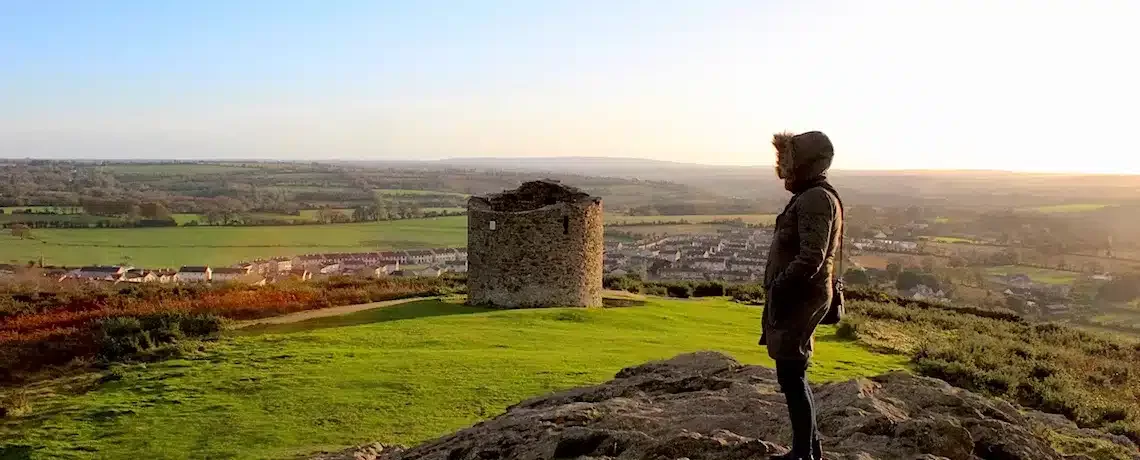
This week’s letter is one for all the Irish Family History enthusiasts out there. We tackle the question: “What do I do when I am stuck in my family history research?” by working with one of our Green Room members and making some suggestions relevant to her particular situation. However, you may notice one or two overlaps with your own situation. Do read on and see what you think…
STUCK IN YOUR FAMILY HISTORY RESEARCH? HERE’S WHAT YOU COULD DO NEXT.
What approach do you take on finding yourself “stuck” at a particular generation when researching your Irish ancestors? Are you missing a single vital record that would provide the important missing link in working your way back another generation?
You may have already discovered the easier-to-find records and made good progress up to this point. However, as records become more difficult to source, you find yourself using a lot of guesswork – hoping the necessary record will jump into your path as you progress slowly. Sound familiar?
When I ask our Green Room genealogists (Hi Jayne and Pam!) how they approach such situations, they both suggest:
- Revisiting ALL your research-to-date and examining it for new clues.
- Using these clues to construct what researchers call a “working hypothesis” (two fancy words meaning “a best guess”).
- Then, set about proving or disproving this working hypothesis.
That’s also the approach they recommend as you make your way around The Irish Research Roadmap in The Green Room.
Would you like an example? Well, in this letter I chat with one of our members – Lesley Bradshaw – who is originally from the UK and now living in Italy. She shares a family history – and research frustrations – and then we look at a best way forward. Over to you, Lesley.
Lesley: My name is Lesley Bradshaw. I was born in London and spent my childhood in Watford, Hertfordshire. In 2017 my husband and I retired and moved to Camaiore in Italy.
Mike: Nice to meet you Lesley – that sounds like a very interesting move for retirement. Good for you both!
Lesley: I have been tracing my family tree for about 10 years now. I joined Ancestry and starting with my immediate relatives was able to trace my father’s side of the family back to 1667. I soon became “hooked” on genealogy. I have found the English side of the family quite easy to trace online but my mother’s side, who came from Ireland has not been so easy.
Mike: That is often the way. Irish records (both church and civil) tend to be more recent compared to many parts of Europe. On the other hand, we have an amazing amount of records available online and for-free compared with many other countries – including the UK.
Lesley: I would like to talk about my Great-Grandparents Laurence Farrell and Mary Kavanagh. According to the 1901 and 1911 censuses Laurence was born around 1872 and Mary 1874. In the 1901 census they were living in house 8 Raheen, Clonroche, Wexford. By the 1911 census they were living in house 5 Raheen, Clonroche, Wexford. I cannot find a wedding record for them but know that their first child was born in 1898.
Mike: I did see those census entries. I also had a look for the wedding record and came up with a blank the same as yourself. When I asked our Ireland-based genealogist, Jayne McGarvey, why a more recent wedding record may be missing – she replied:
“When I cannot find a vital event certificate (e.g. marriage certificate) both when and where I expect it to be, it is usually for mix of the following reasons:
- The record has been incorrectly transcribed or not transcribed (and therefore not searchable).
- The names have been spelt differently to that which you are searching.
- The persons were married elsewhere (maybe outside the state) or on a different date.
- Occasionally a certificate has not been issued.”
Mike says: I noticed that Laurence was listed as “Agricultural Labourer” in the census. Very few Irish farmers owned the land they farmed up to the early 1900s – but were typically “tenant farmers”. Agricultural labourers were different again to tenant farmers – often had no tenancies of their own (or a very small tenancy) and had to travel to find work. They often received accommodation with that work. I find that the constant travel associated with agricultural labourers can often frustrate efforts to locate records.
Lesley: Their children were as follows:
- Mary Farrell appears on the 1901 census as a daughter aged 12. I have been unable to find a record for a Mary Farrell around that time but have found a Mary Kavanagh born 20 Sep 1888, Taghmon, Wexford – Mother Mary Kavanagh.
- Johanna Farrell born 25 Apr 1898, Blackhill, Taghmon, Wexford
- Kate (Katherine) Farrell born 18 May 1900, Raheen, Clonroche, Wexford
- Mary Ann Farrell born 15 June 1901, Raheen, Clonroche, Wexford
- Patrick Farrell born 12 March 1903, Raheen, Clonroche, Wexford
- Margaret Farrell born 22 Dec 1904, Raheen, Clonroche, Wexford (My Grandmother)
- Martin Farrell born 26 June 1906, Raheen, Clonroche, Wexford
- Laurence Farrell born 9 June 1910, Raheen, Clonroche, Wexford
Mike: That is very interesting to see Mary listed as a daughter, aged 12, in the 1901 census. She was likely born before the couple were married. I also notice that – when you remove Mary snr. from the census lineup you outline above, both the 3rd male and the 3rd female child share the same names as their parents. This may mean that:
- Mary senior is not the daughter – although named as such – especially given that there is a Mary later in the list of children – and alive at the same time.
- The family were following Irish naming patterns. This would imply that (excluding Mary senior) the eldest boy (Patrick) and the eldest girl (Johanna) may share the same name as the paternal grandfather and maternal grandmother respectively.
I think it is useful to consider the above two points as “working hypotheses” (best guesses to be proven or disproven) as you progress with your research around this particular couple.
Lesley: My Grandmother was brought up in Clonroche and nearby Enniscorthy but moved to London where she met my Grandfather. Her parents lived all their lives in Ireland – Laurence died in 1927 of bronchitis/heart failure and Mary died in 1925 of carcinoma of the liver.
Mike: Enniscorthy is a lovely part of Ireland. I think it was brought to life beautifully in the recent movie, “Brooklyn”. Have you seen it? Those poor Farrell children certainly lost their parents at a relatively young age.
Lesley: Laurence was a Farm Labourer but unfortunately, I know nothing else about this couple. I regret that I did not talk to my Grandmother about her parents and I would like to know more.
Mike: As you say – it is hard to beat talking with relatives whose memories go back to the time we are researching.
Lesley: I went to Enniscorthy and Clonroche in 2006 as my mother wanted her ashes buried in the grave with her mother, uncle and grandparents. They are buried in the graveyard of a beautiful little church called St Clements in Cloughbawn. It was a very moving experience going back to the place where my grandmother was born and meeting second cousins who now live in Dublin. I would like to return sometime in the future. The visit prompted me to make my “Irishness” official and have now applied for an Irish passport.
Mike: Good for you – that sounds like a lovely resting place for your Farrell ancestors.
Lesley: I would love to be able to trace back further than my great-grandparents but unfortunately have hit a brick wall. I have had no luck finding a marriage record for the couple and therefore cannot find the names of their fathers, which leads me to be unable to know which birth record belongs to them. I would be grateful for any help you can give in pointing me in the right direction – especially if it entails a trip back to Ireland!
Mike: A couple of thoughts on going back beyond your Farrell couple – I think you need to go a little wider on your research:
- I notice that there is another older Farrell family in Clonroche village in both the 1901 and 1910 census. I also see that they share many of the same names as your Farrells – including “Laurence”. I think it is important to look for (or disprove) links between this family and your own.
- Also, take my point on board about the “naming patterns” and “working hypothesis” mentioned further up this letter. Look for other Farrells and Kavanaghs with shared first names in the records in County Wexford.
- Track down Mary Farrell mentioned in the 1901 census. Where does she appear in the later records? Was she really the daughter of Laurence and Mary?
- Use the Green Room research roadmap to progress your research on this couple – and use our Green Room genealogist to answer questions as you move along that roadmap.
Lesley: Thank you!
Mike: You are very welcome, Lesley. I look forward to seeing your progress as you break down your Farrell/Kavanagh brick wall. Thank you for sharing your story and family history.
How about the rest of our readers. Do you have a similar situation to Lesley? Maybe some vital record or link is missing and you just can’t make the leap back to a previous Irish generation. Do let us know – we’d love to hear!
Slán for this week,
Mike.

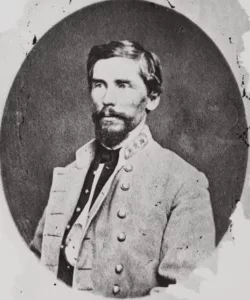
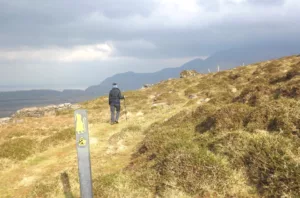
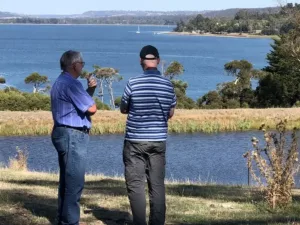
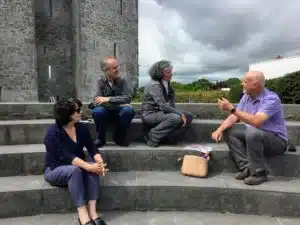
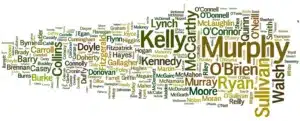
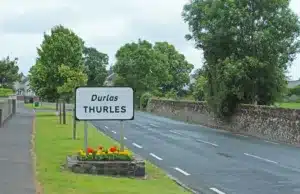
Only Plus Members can comment - Join Now
If you already have an account sign in here.